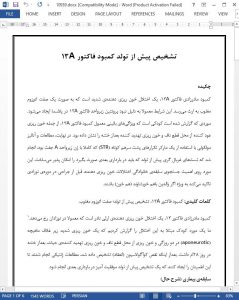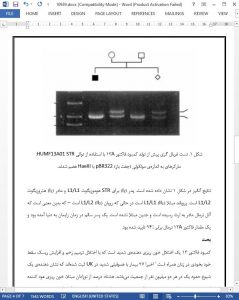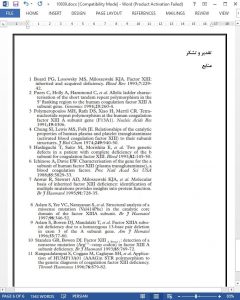Abstract
Congenital factor XIII deficiency is a severe bleeding disorder that is inherited as an autosomal recessive trait. The condition is commonly due to absence of the factor XIII-A subunit protein in the plasma. The case of a baby is reported who showed typical clinical features of factor XIII-A deficiency, including recurrent bleeding from the umbilical stump and a life threatening haemorrhage after circumcision. Family studies were performed and molecular analysis, using a Short Tandem Repeat (STR) marker closely linked to the A subunit gene, allowed antenatal exclusion diagnosis to be undertaken in a subsequent pregnancy. The case highlights the importance of seeking a family history of bleeding disorders before surgery in the neonatal period, particularly if the parents are consanguineous. (Arch Dis Child Fetal Neonatal Ed 1999;80:F238–F239)
Congenital factor XIII deficiency is a rare inherited bleeding disorder that commonly occurs in neonates.1 We report a case of a baby with this disorder who developed a large sub-aponeurotic haemorrhage when 2 days old, with recurrent bleeding from the umbilical stump and a life-threatening haemorrhage after a circumcision on day 28. After the coagulation defect had been diagnosed, genetic studies were undertaken which ensured that a successful prenatal diagnosis was performed in a subsequent pregnancy











